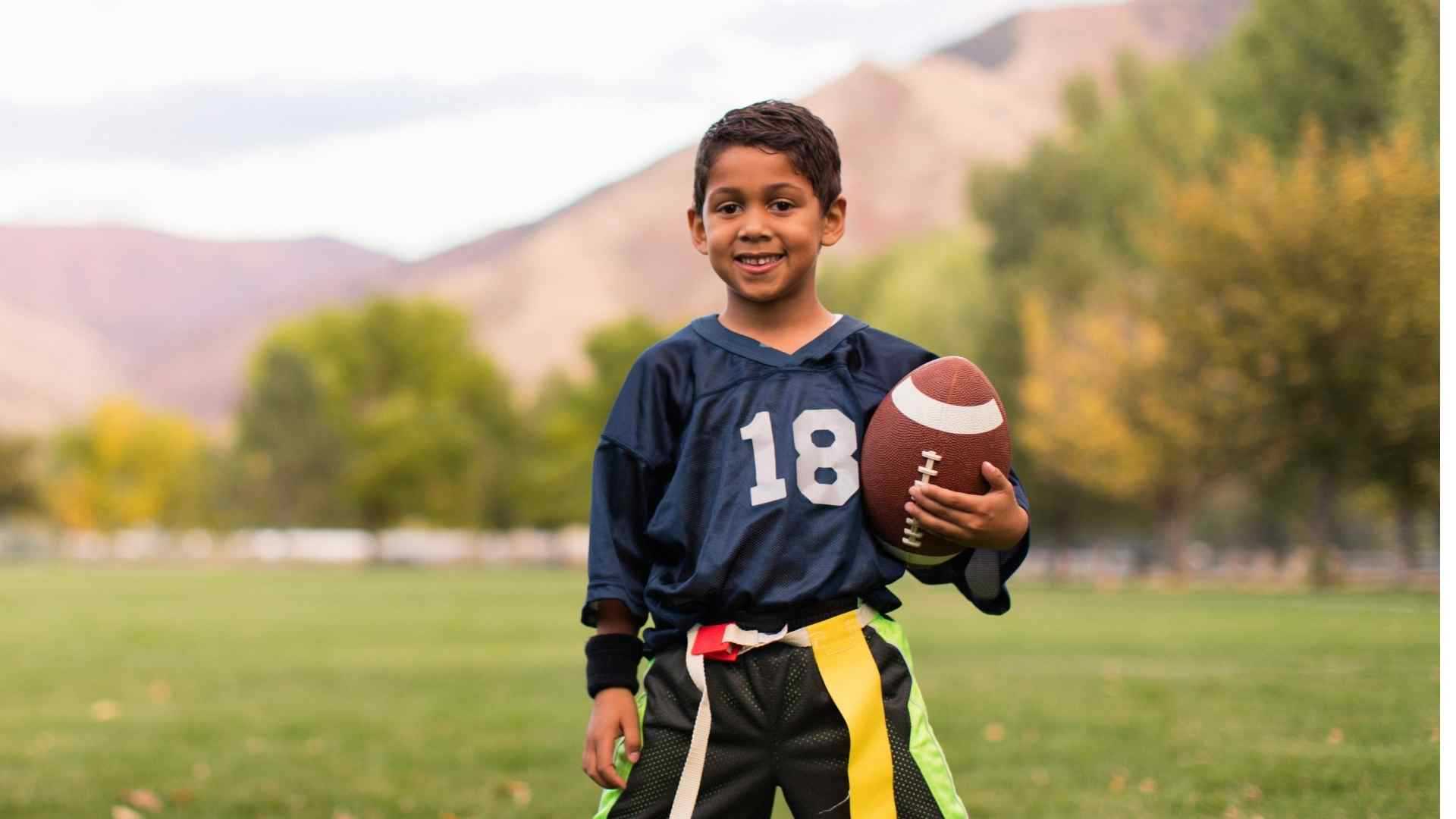Are All Mouthguards Created Equal?
How to protect those pearly whites
Sue Pierce
| 5 min read

NFL Flag
Most youth athletes have a love/hate relationship with their mouthguards: They know it’s a necessary piece of equipment, but they don’t always like it. Delaney Belanger, 14, an ice hockey player from Massachusetts, finds mouthguards annoying because they get in the way of breathing and talking. “You have to take it out to drink water,” she says.
Mouthguards are mandatory for certain youth sports. Think: field hockey, football, ice hockey, lacrosse, and wrestling. And if it were up to the American Dental Association (ADA), everybody would wear one. They recommend that players of at least 17 other sports – including soccer, skiing and surfing – wear mouth guards. Clearly, they love safe teeth.
My son has played football (flag and tackle) and lacrosse for 5 years now. The ritual of molding a mouthguard kicks off each season. Through trial and error, he has found his preferred type. For families just starting out, here is some key info to help athletes find their fave mouthguard faster.
Why do mouthguards matter?
What does a bit of plastic do, really?
Mouthguards prevent trauma – from broken teeth, loose or knocked out teeth to jaw fractures, says Dr. Danielle Ross, an orthodontist in Windham, New Hampshire, and mother of two high school athletes. The worst dental injuries she’s seen are actually from cheerleading, a sport that doesn’t require mouthguards. Front teeth get completely knocked out when an elbow gets in the way of a catch. A mouthguard is an easy way to prevent injuries like that. Mouthguards also help cushion teeth during falls or tackles.
Know your options
Ready-made mouthguards. There’s a spectrum of price, material and fit when it comes to mouthguards. Ready-made mouthguards are the least expensive. Amazon sells a two-pack for $7.50. This single-layer, flexible plastic mouthguard does not need to be molded to fit. But often, kids find these mouthguards uncomfortable. Says Delaney, “It feels like a big hunk of plastic in your mouth.”
Boil-and-bite mouthguards. “Boil and bite” mouthguards can be molded to fit your athlete’s mouth – all you need is a pot of boiling water and a timer. This type of mouthguard – easily found online and in sports stores – comes in a variety of styles and prices. Most athletes say this type of mouthguard is more comfortable than ready-made. The Shock Doctor Gel Max is my son’s favorite – and at $13, it doesn’t break the bank. One should last an entire season – if there’s minimal chewing on it. Yes, kids do that.
A word about braces. If your athlete wears braces, make sure that the boil-and-bite mouthguard is orthodontically-friendly. If it’s not, it will lock around the braces as it cools. “I’ve had a few patients get them stuck in their mouth,” says Dr. Ross. Most mouthguards advertise if they are compatible with braces.
Slim fit mouthguards. Many companies offer a slim mouthguard option. Shock Doctor makes the Trash Talker and Microfit – both available in the low $20 range. SISU mouthguards are known for their thin design. Their patented technology involves a triangular pattern of holes designed to absorb shock. Made from thermoplastic, the SISU Max Guard – the style recommended for most youth sports – is thinner than most on the market, but it costs a hefty $35.
That said, Dr. Ross does not recommend a slim model. “Thinner mouth guards are not going to protect as much,” she says. “If kids get elbowed or hit and they bite down, you want something that’s going to cushion that.”
Mouthguards with a lip protector. Some athletes prefer a mouthguard with a lip protector. This style covers the player’s lips for added protection and has a hole in the middle for breathing. It can’t be molded to fit, but it does work with braces.
“Lip guards are going to protect against facial injuries,” explains Dr. Ross. “I don’t think it’s a bad idea if you can get your child to wear it.” If your player is up for trying one, there are many flashy options. The Shock Doctor Air Flow costs between $18 to $23 and comes in a variety of patterns and bright colors. There’s even a version with an interchangeable face so the lip guard can match your athlete’s mood. But Battle takes the prize for fun. Their Oxygen mouthguard runs between $20 to $25, depending on how flashy the style. Athletes can show off their creative side with designs that include the American flag, gold animal fangs or even a binky lookalike – ring handle included.
Custom mouthguards. According to the ADA, the best mouthguard is one that has been custom made for your mouth. The most expensive option, custom mouthguards are made by a dentist or orthodontist. You’ll need to schedule an appointment to have an impression or scan done.
Dr. Ross says a custom mouthguard provides the most protection and comfort because “it fits perfectly.” No surprise, her daughter has one. “She can talk. She can yell,” says Dr. Ross. “It hugs every single one of her teeth.” Dr. Ross says they cost around $55, but can last several years if your child has all of their adult teeth. Since they’re crafted by the experts, they work perfectly with braces, too.
Chew on this
Clearly, the professionals’ choice is custom-made, but boil-and-bite is the next best option. At the end of the day, the best mouthguard is the one that your athlete wants to wear – and that works for your budget.
Got the flag football gear you need? If not, check out:




